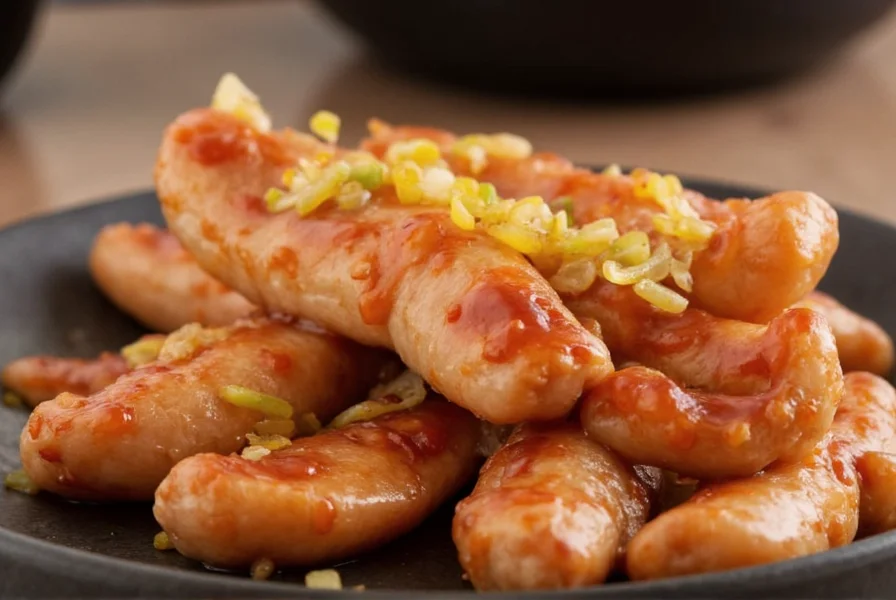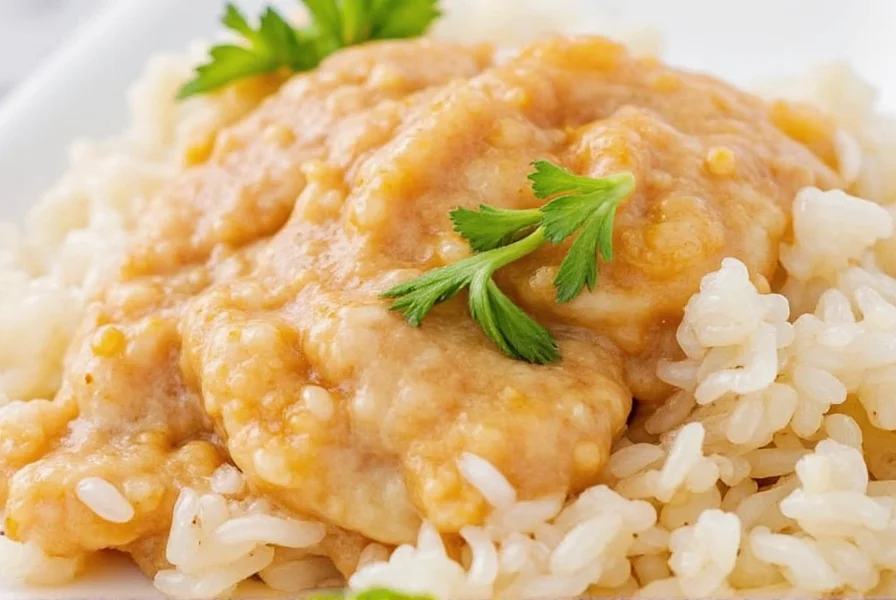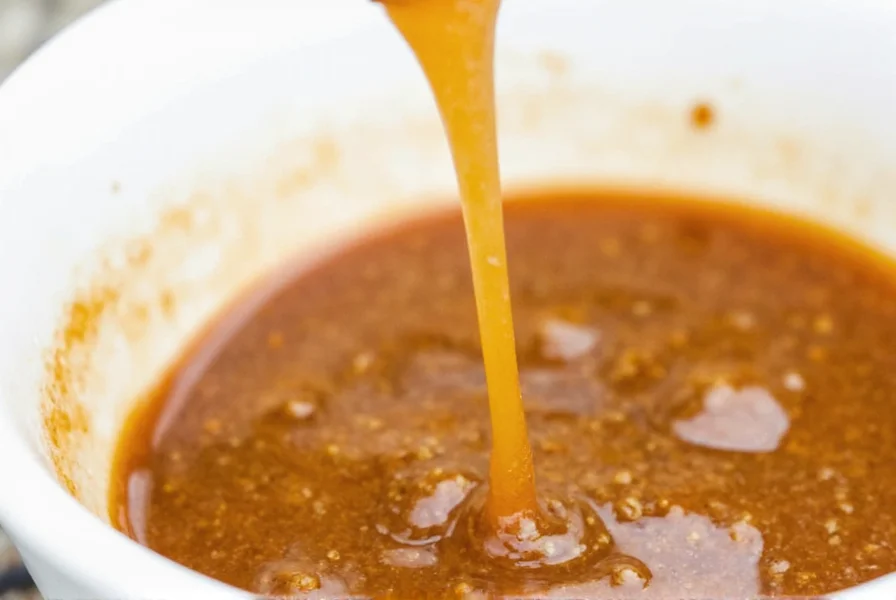When you smell that unmistakable aroma wafting from a hibachi grill, much of that signature scent comes from the ginger sauce splashed across the cooking surface. This essential component of Japanese teppanyaki cooking transforms simple proteins and vegetables into restaurant-quality meals with its perfect balance of savory, sweet, and spicy notes.
What Makes Hibachi Ginger Sauce Different
Many home cooks confuse regular ginger sauce with authentic hibachi-style ginger sauce. The key distinction lies in both ingredients and preparation method. Traditional hibachi ginger sauce features freshly grated ginger rather than powdered ginger, creating a brighter, more complex flavor profile. Unlike Chinese ginger sauces which often emphasize vinegar, hibachi versions incorporate mirin for subtle sweetness and depth.
Professional hibachi chefs typically maintain their own proprietary blends, but the foundational elements remain consistent across authentic preparations. The sauce functions as both cooking medium and finishing touch, caramelizing on the hot grill to create that characteristic umami-rich crust on meats and vegetables.
Essential Ingredients Breakdown
Creating an authentic hibachi ginger sauce requires attention to ingredient quality and proportions. Here's what makes each component essential:
| Ingredient | Function | Quality Tip |
|---|---|---|
| Fresh ginger root | Provides signature zing and aromatic quality | Use young ginger for milder flavor, mature for more heat |
| Soy sauce | Creates umami base and color | Low-sodium preferred to control saltiness |
| Rice vinegar | Balances sweetness with acidity | Unseasoned for authentic flavor profile |
| Mirin | Adds subtle sweetness and sheen | Authentic Japanese mirin preferred |
| Sesame oil | Provides nutty aroma and depth | Use toasted sesame oil sparingly |
Authentic Hibachi Ginger Sauce Recipe
Creating restaurant-quality ginger sauce at home requires precise measurements and technique. This authentic hibachi ginger sauce recipe yields enough for 4-6 servings and maintains the proper balance that defines the traditional flavor profile.

Ingredients
- 1 cup rice vinegar (unseasoned)
- 3/4 cup soy sauce (low-sodium)
- 1/2 cup mirin
- 1/4 cup granulated sugar
- 3 tablespoons freshly grated ginger
- 2 tablespoons minced garlic
- 2 tablespoons sesame oil
- 1 tablespoon vegetable oil
- 1 teaspoon red pepper flakes (optional)
Step-by-Step Preparation
- Combine rice vinegar, soy sauce, mirin, and sugar in a saucepan over medium heat
- Whisk continuously until sugar dissolves completely (approximately 3-4 minutes)
- Remove from heat and add freshly grated ginger, minced garlic, and red pepper flakes
- Cool to room temperature before adding sesame and vegetable oils
- Transfer to airtight container and refrigerate for at least 2 hours before use
- Shake well before each use as separation is natural
This authentic hibachi ginger sauce recipe creates the perfect consistency for both marinating and drizzling. The sauce should coat the back of a spoon without being overly thick. For restaurant-style results, always use freshly grated ginger rather than pre-minced varieties which contain preservatives that alter the flavor profile.
How to Use Hibachi Ginger Sauce
Understanding proper application separates amateur attempts from authentic hibachi cooking. Professional chefs use the sauce in three distinct ways:
As a Marinade
For proteins like chicken, steak, or shrimp, marinate for 30-60 minutes (never超过2 hours as the acidity can begin to "cook" the protein). The ginger sauce tenderizes while imparting flavor without overwhelming the natural taste of the meat.
During Cooking
When preparing hibachi-style meals, chefs splash the sauce directly onto the hot cooking surface. The high heat causes the sauce to caramelize instantly, creating that signature smoky-sweet aroma and flavor. Use approximately 2-3 tablespoons per serving during cooking.

As a Finishing Sauce
Serve additional sauce on the side for dipping. Many restaurants provide small ramekins alongside hibachi meals. For home preparation, portion into small containers just before serving to maintain freshness.
Common Mistakes to Avoid
Even experienced home cooks make these critical errors when attempting authentic hibachi ginger sauce:
- Using powdered ginger instead of fresh - Powdered ginger lacks the bright, complex flavor of freshly grated root
- Overheating the sauce - Boiling destroys delicate flavor compounds; gentle warming is sufficient
- Improper storage - Refrigerate in glass container for up to 2 weeks (plastic can absorb flavors)
- Incorrect ginger-to-garlic ratio - Authentic versions emphasize ginger with garlic as supporting flavor
- Adding ingredients post-refrigeration - Flavors need time to meld; don't adjust after chilling
Storage and Shelf Life
Properly stored hibachi ginger sauce maintains quality for 10-14 days in the refrigerator. Always use a clean spoon when retrieving sauce to prevent contamination. For extended storage, freeze in ice cube trays then transfer to freezer bags for up to 3 months. Thaw overnight in the refrigerator before use.
Noticeable separation is normal and indicates no preservatives are present. Simply shake vigorously before each use. Discard if you detect any off odors, mold, or significant color changes.
Frequently Asked Questions
What's the difference between hibachi ginger sauce and regular ginger sauce?
Hibachi ginger sauce features freshly grated ginger rather than powdered, includes mirin for subtle sweetness, and has a higher vinegar-to-soy ratio than regular ginger sauce. The authentic version contains no artificial colors or preservatives and is designed specifically for high-heat cooking applications.
Can I substitute honey for sugar in hibachi ginger sauce?
Yes, you can substitute honey for sugar using a 3:4 ratio (3/4 cup honey for 1 cup sugar), but this creates a slightly different flavor profile. Authentic hibachi sauce uses granulated sugar which caramelizes differently under high heat. Honey adds floral notes that aren't traditional in Japanese teppanyaki cooking.
Why does my homemade ginger sauce separate in the refrigerator?
Separation occurs naturally in authentic ginger sauce because it contains no emulsifiers or stabilizers. The oils and liquids naturally separate when chilled. Simply shake vigorously before use. If separation is excessive, you may have used too much oil or not allowed proper cooling time before adding oils to the base mixture.
How can I make hibachi ginger sauce less spicy?
To reduce spiciness, decrease the amount of fresh ginger and increase the mirin proportionally. Young ginger root is naturally milder than mature ginger. You can also strain the sauce after refrigeration to remove ginger particles that contribute most to the heat. Avoid using ginger powder as it creates a different kind of heat that's harder to control.
Can I use this sauce for teriyaki dishes?
While similar, hibachi ginger sauce isn't ideal for traditional teriyaki dishes. Teriyaki requires a thicker, sweeter glaze with different ingredient proportions. However, you can adapt this recipe for teriyaki by increasing the sugar content by 50% and reducing vinegar by 25%, then simmering until thickened. Authentic teriyaki uses different ratios of core ingredients.











 浙公网安备
33010002000092号
浙公网安备
33010002000092号 浙B2-20120091-4
浙B2-20120091-4